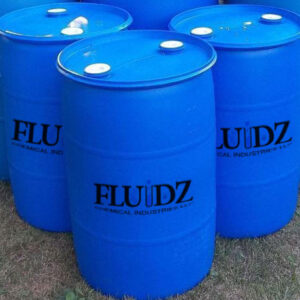Description
Odour Control Chemical suppliers contains simple sugar molecules which resemble a honeycomb or a zeolite molecule. Due to its unoccupied space, it can absorb many times its own weight in odorous molecules. It also contains amino hydroxyl groups which ionize sulfides and thiol Radicals to form hydroxyl sulfides.
The hydroxyl sulfides are converted in the presence of oxygen to amino sulfate. The sulfate group then separates ionically into a sulfate ion and another amino group which is free to react with another sulfide or mercaptan. Thus, a small amount of Odour Control Chemical can impact large amounts of sulfides and mercaptans.
Odour Control Chemical also contains a proprietary acid which reacts with ammonia and amines to convert them to harmless salts. Odour Control Chemical contains oxygenated terpenes which participate in ionic reactions and are highly reactive toward many odorous compounds. In summary, OCC encapsulates, emulsifies, and generates specific reactions with odorous gases such as sulfides, thiols, amines, and ammonia to generate decomposition and re-composition reactions with aromatic structures and other circular hydrocarbons.
These reactions continue in a series to release key components as they are no longer needed. These components are then free to function in the same reaction chain with other odorous molecules. These released components are self replicating to some degree. This is what allows substantial dilution of Odor Control Chemical while still producing high impact performance.
Odour Control Chemicals has a specific reactions with odorous gases such as:
- Sulfides
- Thiols
- Amines
- Ammonia to generate decomposition and re-composition reactions with aromatic structures and other circular hydrocarbons


